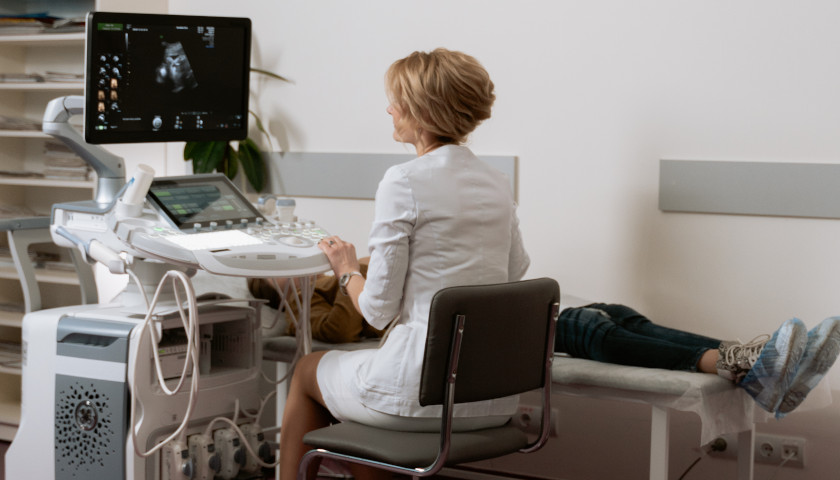by Melanie Israel
The Centers for Disease Control and Prevention and the pro-abortion Guttmacher Institute each released new reports last November about abortion data for 2020, showing conflicting reports of a decrease in abortions versus a significant increase. While the lack of clarity in the number of abortions is alarming, the spread of do-it-yourself at-home abortions means that neither report is telling the whole story.
The CDC Numbers Versus Guttmacher Numbers
The CDC found that the number of abortions in 2020 decreased 2% from 2019. That seems like good news. Unfortunately, Guttmacher found that there’s been an 8% increase from 2017 to 2020.
Why don’t these two reports agree?
The CDC issues an annual report of abortion surveillance in the United States by collecting data from those states that choose to submit their data (California, Maryland, and New Hampshire don’t do so).
In contrast, the Guttmacher Institute—formerly the research arm of Planned Parenthood—surveys abortion providers and clinics directly. This “Abortion Provider Census” is done every three years.
So, these two entities have different missions and draw from different sources. With no federally mandated system, these reports are the best we have. Still, both had shown a reliable trend of declining abortions for many years.
What the Numbers Say
The CDC reported:
- There were 620,327 abortions in 2020. This is a 2% decrease from 2019 and a 15% decrease from 2011.
- Ninety-three percent of abortions occurred in the first trimester (at or before 13 weeks gestation).
- Fifty-one percent of abortions were conducted via abortion pills rather than a surgical procedure, though this is likely an undercount. The use of abortion pills went up 22% in the last year and an incredible 154% since 2011.
Guttmacher reported:
- There were 930,160 abortions in 2020. This is over 300,000 more abortions than the CDC reported and an 8% increase since 2017.
- Fifty-three percent of abortions were conducted via abortion pills—again, still a likely undercount. The use of abortion pills has gone up 45% since 2017.
As Guttmacher puts bluntly, their “findings demonstrate that the long-term decline in abortion in the US had reversed.” That’s good news for the abortion industry. It’s horrific news for babies and for Americans who want our laws and our culture to protect every human person.
Undercounting?
Why is there likely an undercount?
First, the CDC is missing data from abortion-friendly states like California and Maryland. Guttmacher also acknowledges the limits of its own census, which, like the CDC, is voluntary.
Second, the growing use of abortion pills at home makes it harder to count actual abortions. Guttmacher counts chemical (abortion pill) abortions that “occurred in clinical settings” but points out that during their census, roughly 55,000 people requested abortion pills online without going to a facility, according to one study. How many of these women got pills and went through with an abortion? And how many more women got abortion pills from unscrupulous foreign and domestic sources? We don’t know.
Abortion Pill Risks
The complication rate from abortion pills is four times that of a first-trimester surgical abortion. One study found that between 2002 and 2015, emergency room visits following a chemical abortion ballooned by more than 500%.
Both the CDC and Guttmacher confirm that more and more women are opting for abortion pills. And without better data collection and adverse event monitoring, we can’t know just how many women take this health and safety risk.
What Now?
Policymakers should agree that we can do better than the status quo in which we don’t fully understand where, when, how, and how often abortions occur.
At the federal level, a better path forward should start with:
- Creating a streamlined national standard for abortion reporting to encompass data from all states and territories to ensure that federal abortion data is both reliable and accurate.
- Reversing the Food and Drug Administration’s decision allowing telemedicine abortion, abortion pill by mail, and retail pharmacies to dispense abortion pills.
- Enforcing existing laws and preventing international actors from shipping chemical abortion drugs to women in the United States while prosecuting those who fail to comply.
These actions would help address the problem of counting—and undercounting—the number of abortions that occur in the U.S. each year. And they would be a step in the right direction to protect unborn children and women’s health and safety from the emerging do-it-yourself abortion pill Wild West.
Last summer in Dobbs v. Jackson Women’s Health Organization, the Supreme Court corrected a grave wrong and overturned Roe v. Wade. This paved the way for lifesaving laws to go into effect in states across the country.
But the CDC and Guttmacher reports are a sobering reminder of just how high the stakes are. Every single life lost to abortion is precious and irreplaceable. We won’t see the impact of the Dobbs decision in the data for a couple more years. But it’s clear that abortion pills will pose the single biggest threat to pro-life progress in a post-Roe world.
– – –
Melanie Israel is a policy analyst with the DeVos Center for Life, Religion, and Family at The Heritage Foundation.




